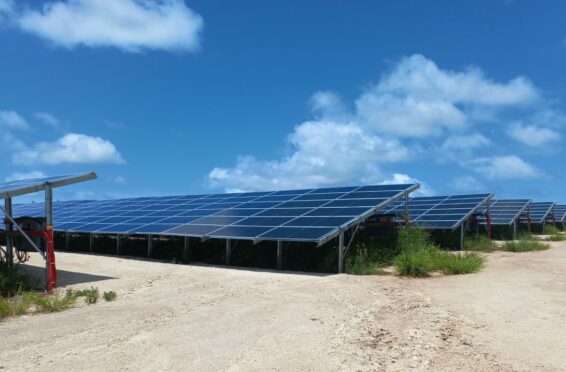EMS and grid-forming batteries support renewable energy integration on island microgrid
Islands that depend heavily on diesel generators are looking to smart energy management systems and grid-forming inverters to increase renewable energy integration into their microgrids and deliver a stable power supply to their customers. Energy Pool and Enercal are pioneering advanced microgrid solutions to support New Caledonia’s transition from diesel generators to zero-carbon energy sources like PV and biofuels.
A smart energy management system (EMS) to maximize PV integration
Smart energy management systems (EMS) are vital to the smooth operation of island microgrids. The South Pacific archipelago of New Caledonia is a prime destination for tourists and home to exceptional natural ecosystems. Not surprisingly, renewable energy is growing in New Caledonia, and innovation is playing a key role in the ambitious energy transition policy implemented in 2016. Enercal, which manages the transmission network throughout the territory and the distribution networks in 25 of the 33 municipalities, is playing a major role in New Caledonia’s energy transition.
The company issued a request for proposals in June 2021 for an integrated solution to manage and optimize two microgrids, including one on Ile des Pins, with the goal of making the tourist destination’s energy system zero-carbon by 2025. When this island microgrid management and optimization project began, solar energy was meeting 5% of total demand on Ile des Pins, but the installed PV base could not be used effectively because of disruptions to the island’s diesel generators, which could only communicate with each other, but not with assets like batteries. The EMS—the key to grid stability—will be vital to increase the penetration of renewable energy on the island.
Island microgrids are self-contained, yet complex energy systems
Enercal’s contract for Ile des Pins included additional solar energy production capacity and storage batteries. Energy Pool, an expert in energy management for complex systems, was selected to provide the system that controls all these assets, plus the existing diesel generators, which are managed individually.
The two main components of Energy Pool’s system are the EMS, or energy management system, and the PMS, or power management system. The EMS optimizes operation of all assets. Generators, for example, must not be allowed to operate at less than 30% to avoid shortening their useful lifespans. The batteries have their own requirements. Each has its own capacity and state of charge—all of which have to be optimized.
Finally, because this is an island microgrid not connected to a mainland grid, every possible scenario has to be taken into account. This includes ensuring that the primary reserves are available to respond to events like an increase in demand, a generator that goes down, the partial loss of battery capacity, or total unavailability of PV production. The EMS sends an ideal profile of the coming day to the second component of the system, the PMS, every fifteen minutes. The PMS, installed locally, checks to make sure that the microgrid can do what the EMS is asking, and also handles emergency measures like ensuring a minimum state of charge for the batteries or reducing PV production, plus any other actions like restarting the microgrid after a blackout or authorizing load shedding.
Grid forming batteries support increased integration of renewable energy
One particular innovation on the Ile de Pins microgrid is that the batteries operate in grid forming mode all the time. But first, what are grid-forming batteries? The Australian Energy Market Operator identified grid-scale inverters as key to the energy transition in a 2021 white paper. Grid-forming batteries (grid-forming inverters coupled with batteries) overcome one of the challenges of renewable energy integration by “synchronizing” with conventional asynchronous assets like generators, something that the conventional grid-following inverters used to connect assets to the grid cannot do. Tesla batteries operate in grid forming mode.
However, this could be the first time a microgrid battery operates 100% in grid forming mode alongside diesel generators, providing the stability needed to keep the grid up and running. This grid forming capability means that the batteries can communicate with the generators through the PMS, attenuating fluctuations in grid frequency due to the balance of supply and demand on the grid, and increasing the grid’s inertia, or ability to continue functioning even if a generator goes down, for example—something that would not be possible without the PMS. Here, Energy Pool’s system reproduces all system services (the primary, secondary, and tertiary reserve sources), with the EMS and PMS orchestrating the communication and regulation that allow the grid-forming batteries to improve the microgrid’s strength and resilience.

